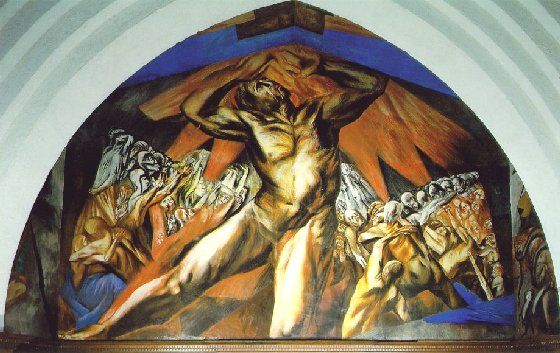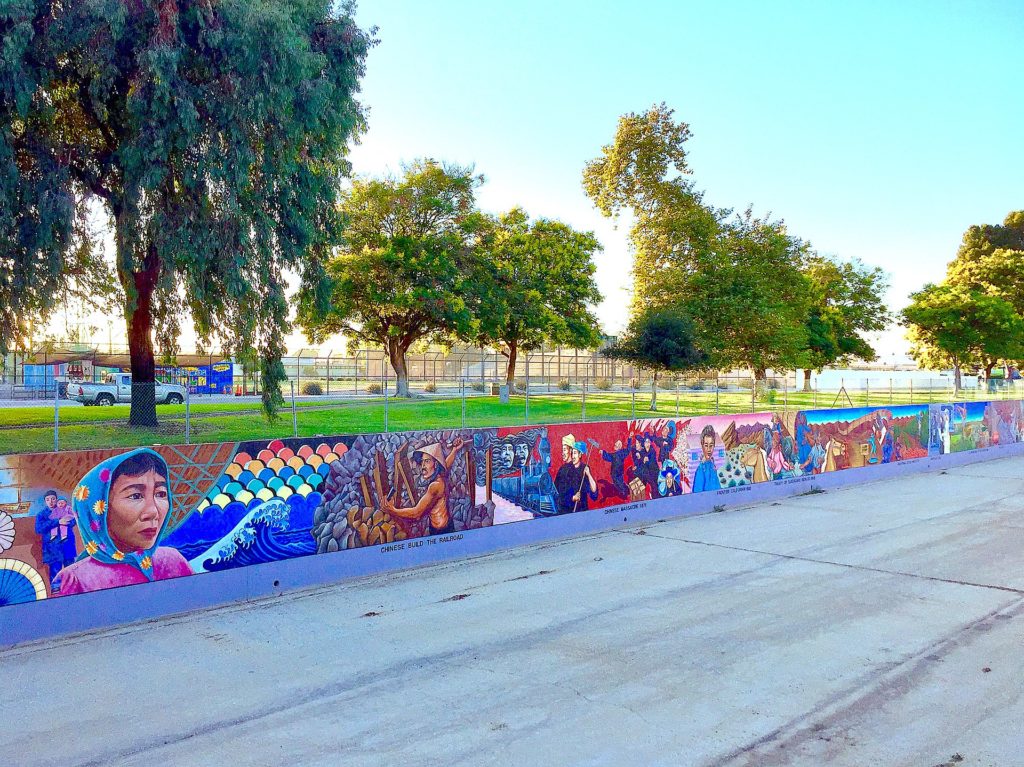By Jin Yang
If you live in LA, you are not unfamiliar with the vibrant arts on the streets that help produce countless aesthetic photos on Instagram. For example, the Love Wall (8549 Higuera St., Culver City) created in 2015, two days before Valentine’s Day by Curtis Kulig or the pink wall of a fashion boutique on Melrose. This form of art that takes place on the walls or exterior of a building is called mural art.
Paul Smith, Pink Wall, 8221 Melrose Ave., Los Angeles
The inception of modern muralism exists from an exciting purpose, starting in the 1920’s with Mexican Muralism, right after the Mexican Revolution against the dictator Porfirio Díaz. This was a time during which many political and social changes were happening. Mexican Muralism was led by three influential artists: Diego Rivera, José Clemente Orozco, and David Alfaro Siqueiros, also known as Los Tres Grandes. Their art works were illustrated on public walls, telling the history of their people, calling out historical injustice, and progressing ideas on national identity and social justice.
Two of the three artists were actually invited to Los Angeles in the 1930’s to paint. In 1930, José Clemente Orozco painted the Prometheus in Pomona College, and in 1932, David Alfaro Siqueiros received a commercial invitation to paint on Olvera Street.
José Clemente Orozco, 1930, Prometheus, Frary’s Hall, Pomona College
The project given to David Alfaro Siqueiros was set for Olvera Street, a folkloric Mexican marketplace that serves as a tourist sight in Los Angeles. The sponsor suggested a romanticized, exotic theme, “Tropical America,” for the mural art. However, given the social injustice that the Mexican immigrants faced at that time in LA, Siqueiros had a very different interpretation of what “Tropical America” meant.
Therefore, on the public wall of Olvera street, he painted a huge indigenous man crucified on a cross underneath an eagle, symbolizing the oppression of American imperialism. The background of the painting was a destroyed Mayan ruin with two Mexican men hiding in the corners with guns waiting to revolt. The mural art was so revolutionary and received so much attention that after six months of display, America Tropical was repainted with thick white paint and was not recovered until 2012.
David Alfaro Siqueiros, 1932, America Tropical, 2nd Floor of Italian Hall, Olvera Street
The significance of David Siqueiros’s America Tropical is that it later served as the main inspiration for the Chicano Art Movement that started in the 1960’s, a time contemporary to the Civil Rights Movement and Anti-Vietnam War. Artworks that were inspired by America Tropical include: The Great Wall of Los Angeles, 2754ft, the longest mural art in the world, funded by the Social and Public Art Resource Center (SPARC), depicting the history of California from 20,000 BC to 1984.
SPARC, Great Wall of Los Angeles, 5800 Coldwater Canyon Ave, Valley Village
The following are some of my favorite mural artists here in Los Angeles:
Jin is a senior majoring in French and speaks fluent English and Mandarin Chinese. She is a constant traveler and enjoys conversations, hiking, and fine-dining.




